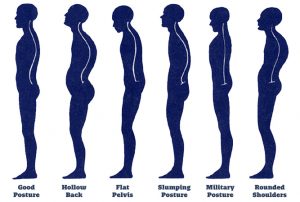The benefits we can get from working in this area are enormous; it’s well worth taking the time to explore and develop your skills. You are breathing whilst you are reading this and did the same brilliantly whilst you were sleeping last night. So, if we are so good at breathing then how come we become so de-skilled during voicing? It’s our brains fault!! It does not like extending patterns of breath beyond ‘normal’ (especially as lung volume gets low) because it is worried about where we are going. Our brain prioritises other activities in the body ahead of singing and it will try to deny us access to the vital components of voicing unless we can train our bodies to work with efficiency. Once we control breath with a sense of effective economy the brain becomes increasingly permissive and will allow us access to the tools we need.
Basically, we need to ask the brain for permission in the right way at the right time, if we don’t then we don’t get what we want. The same thing happens in our house with please and thankyou!
If you work on the following 5 areas you will achieve improvement in breath;
- Release tension from the body
Its imperative that you release tension before applying effort so you can tell the difference between the two. Each area of voice production is linked and therefore tension in one area will soon impact on another. Where possible, try and start with a clean slate as often as you can.
- Stand up straight with an alert but mobile posture. Close your eyes, scan down your body and analyse each area of the body carefully, starting with the head, working through the neck and shoulders, into the upper torso and so on all the way down to your toes. Don’t try and change anything at this stage just notice what’s there.
- Repeat the exercise and as you go try to release any tension you have discovered ( in the shoulders for example). Do this slowly and enjoy the slow pace. If you find it difficult to isolate anything or achieve a release then actually applying tension can help, Doing this in a specific area can lead to a better understanding of how to identify it and release tension from it. Listening to the body isn’t easy but the more we do it, the more we hear it!!
Once tension is gone then the application and release of effort integral to efficient breathing is made much much easier and less confusing!!!
- Establish good Posture and Alignment
If the physical framework is good or better (or the reverse) it will have a significant impact on all vocal components; its role is often drastically underplayed. Alexander technique illustrates this point perfectly as its creator (Alexander) completely lost his voice due to postural issues.
Our breathing muscles can be easily hampered by really simple, common everyday issues in our spine, neck and shoulders and even things such as constantly biasing our weight distribution on one leg!!!
What is a good posture?
Establishing an understanding of your own flexibility and the condition of certain physical components will help you address issues appropriately. Once this has been achieved its so much easier to apply the effort to the correct breathing muscles at the right time.
Torso and legs
- Are the shoulders relaxed and balanced (neither forward or back)
- Is the spine free, flexible and long?
- Can you touch your feet without too much give in your hamstrings?
- Is the bodies weight evenly distributed?

Neck and head
- Is the neck free to lengthen and explore a range of movement easily?
- Are the jaw and tongue relaxed?
- Are the ears in line with other?
The more flexibility and freedom you have in these areas the more chance you have of establishing an efficient breathing system; obviously the reverse is also true!!!!! Yoga, Osteopathy, pilates, Alexander technique and soft tissue therapies all have a role to play in developing these areas and if you have major concerns then these are all wonderful avenues to explore.
How do I assess MY own posture?
Probably the best place to start is to get someone to photograph you from the front, back and side. From here you can see what it is that you do!! We can only fix what we can see so start by ‘seeing’. How does your body measure against the above points/pictures? Does it change when voicing???
- Release the abdominal wall and explore accent method
There is a common obsession with the diaphragm, however its movements are difficult to track directly and this often leads to vagueness and confusion for those directing and receiving teaching where abdominal locking (which leads to vocal tension) is often encouraged.
The abdominal wall must be flexible.
Locking of the abdominal wall is a common problem, the release of this can have an immediate impact. When the belly wall is relaxed it is free to move and deliver breath in a controlled manner. Once it is has engaged and delivered it must then return to its original fully relaxed state; this is called a recoil breath. A very good friend, teacher and colleague of mine, Andy Folin, once remarked
‘The movement of breath should feel like the tide, it is never static, it is either on its way in or, its on its way out.’

Vanity and anxiety are obstacles which prevent release – thats why this guy is so good!!!!!!!. Many many singers lock their belly wall at the start or part way through. Gulping breath noisily is also another classic symptom of breath control issues. The first thing I ask anyone to do is monitor their movements and see what it is they do. Does it feel relaxed at the start? Does it ever lock? Does it release at the end of the phrase? Do you manage to release into your ‘in breath’ or do you override this with a gulp???
The first phase of changing something is noticing something. Spend time in this phase and then change is much easier.
How to RELEASE the belly wall and ENGAGE the correct muscles
By far the best tool we have here is accent method. Many people love the simplicity of this and how pleasurable and mindful it is to engage in.
However, as with all seemingly simple things there is a great deal of complexity going on underneath. The complex interplay of muscles, how to control and understand their role further is explored further in a succinct fashion by Janice Chapman in her book ‘Singing and teaching Singing’ and also by Dr. Ron Morris in his new book ‘Breathing in and breathing out’
In the meantime, I can give you a good place to start, try this step by step approach:
- Establish a good posture, place your hand on your belly and do a ‘little huff’, the kind of thing my kids do when they’ve been reminded to return to the bathroom to wash their hands. Hopefully your belly wall is now fully relaxed. This is the starting position. Keep your hand there.
- Now release a Shhhh sound making sure your tongue and jaw are as relaxed as possible. As you feel the belly wall move towards your back keep going and make sure the momentum continues.
- After a few seconds you will feel that the inertia becomes a little more challenging to maintain. Just after this point cease the ‘Shh’ and release the belly wall simultaneously; hopefully it will snap back into relaxed starting position in an elastic fashion.
- Repeat this exercise again and again for 5-10 minutes until you are bored of it. You can vary the length of engagement and create you own patterns. However, you must always stick to the principles that the belly wall must be released prior to voicing and must return there on its completion.
Tension will interrupt the process. If you start at tension you will arrive back there so make sure the belly wall, tongue and jaw really are as relaxed as possible.
IMPORTANT POINT ALERT!
The balancing act of breath flow and vocal fold closure is challenging due to the inequality of size and power between the two components. Its all too easy to bully the vocal folds with breath, it takes real skill to have a controlled momentum of breath flow which is complimentary to the vocal folds and that’s what these concepts and exercises are designed to do – ACCENT THE CONTROL IN BREATH CONTROL.
If the vocal folds and breathing components were were dancing partners, one would be a mouse and one an elephant!!!!! Balancing this mismatch is challenging!!!
- Use exercises that connect breath to your larynx and explore EFFICIENT FLOW
Fricatives and semi-occluded tract exercises are excellent. They hook the voice up with the larynx and make it easy to simultaneously monitor tension/relaxation in the filter components (lips, tongue, jaw etc).
There are many to choose from but the best ones for you to start with are the ones which work most efficiently straight away; from here you can work outwards and try them all.
Try singing a scale or phrase at a comfortable pitch, volume and effort level on a continuous stream of;
Vvvvvvv (imagine the gentle rev of a garden strimmer)
Zzzzzzz (Akin to the sound of clippers in a hair salon)
Th……. (As if you were to maintain the ‘Th’ of thousand continuously with the tip of your
tongue resting gently between your teeth – unmoved by pitch)
Lip trill (a continous buuurrrr sound where the lips vibrate freely)
Rolled ‘R’ (you see this every time a Scottish detective says the word ‘murder’ in any current crime drama!!! We also see this in Spanish and South American dialects very frequently)
Select the one that balances a sustained sound with vocal ease and explore!!!
How do I know if I’m doing it ‘right’?
There are several things you could consider whilst working in this way;
- Is the belly wall relaxed at the start?
- Does the belly wall move continuously as the flow is occuring?
- Once the phrase or scale has finished does it recoil silently back to its starting position?
- Does it feel comfortable in terms of sustaining the breath? If you are felling light-headed then you are probably working with too much abdominal momentum. If you are feeling tight and constricted in and around the larynx then this suggests that the larynx is receiving more pressure than it can handle.
- Is your body comfortable or are you becoming tense?
Use your chosen exercise to explore how the flow of breath is working on a song of your choice. Replace all the words with your exercise of choice (zzzz, vvvv etc) work your way through the pitch and rhythm of the song with as much efficiency a possible and then copy this as precisely as you can it when releasing it into the words.
Do you have continuous flow?
Does the zzzzzzz, or vvvvv or whatever you’ve chosen stop?
If the flow stops or it feels inefficient can you figure out ‘the cause’ using the above checklist?
Bonus points
The most common issue once we have freedom in the breathing muscles is that vocal pitch becomes associated with the momentum of the outbreath. Often singers can be seen reducing outbreath momentum for low notes (dropping off) and increasing it for high notes (pushing). The breathing muscles want to mimic the effort of stretching and relaxing in the vocal folds but good singing is dependant upon isolating these areas and asking the body to constantly apply differing levels of effort to all areas of the voice simultaneously. It really is a wonder we can sing at all!!!!!! Miraculous really!!! This was the real moral of the big bad wolf story that everybody forgets!!!!
We can’t think our way to this in most cases, that’s why exercises which program successful dynamic relationships are so hugely beneficial. The mind would rather co-ordinate effort levels to associate with each other. For example, the body would rather pat your head AND your belly rather than rub your belly and pat your head, it’s an effort to isolate and control it.
This kind of control comes through awareness, specific practice and also, sometimes, a helpful trick of the mind so these tasks move from the conscious to the unconscious!!
- Create a mental state which allows you to program efficient breath control into the subconscious.
If you try and think about all this at the same time your head will probably explode!!! At best your body will tense up and good breath control will be very difficult to achieve. Break each area down, get good them separately and then you can build slowly. Once that’s steady you can co-ordinate the machinery via one command rather than 5 or 6 and that should feel eminently more doable. This will create much more serenity in your brain and your breathing will be better for it.
So, this is where some visualisation techniques can work really well. Hopefully using such a technique can tie many thoughts together competently in one go. See how these work when you work with your chosen exercise (zzzz, th, vvvvv etc):
Imagine you can see your out-breath (like you can on a cold day); what does it look like? Make it continuous and narrow
Imagine keeping a leaf floating in the air in front of you. Its momentum away from you is steady and constant so the leave doesn’t drop to the floor.
Close your eyes and imagine a steady kite in the sky. The gust never drops and therefore, neither does the kite!!
Imagine having a flame in-front of you that constantly flickers but never goes out due to your breath stream.
These can be powerful triggers in our minds and help to simplify complex tasks. If we can do this successfully we will pass the skill from our conscious to our sub-conscious and all our hard work can be replayed automatically with great competence once we apply words and artistry.
Good luck putting the control into breath control!!!!





